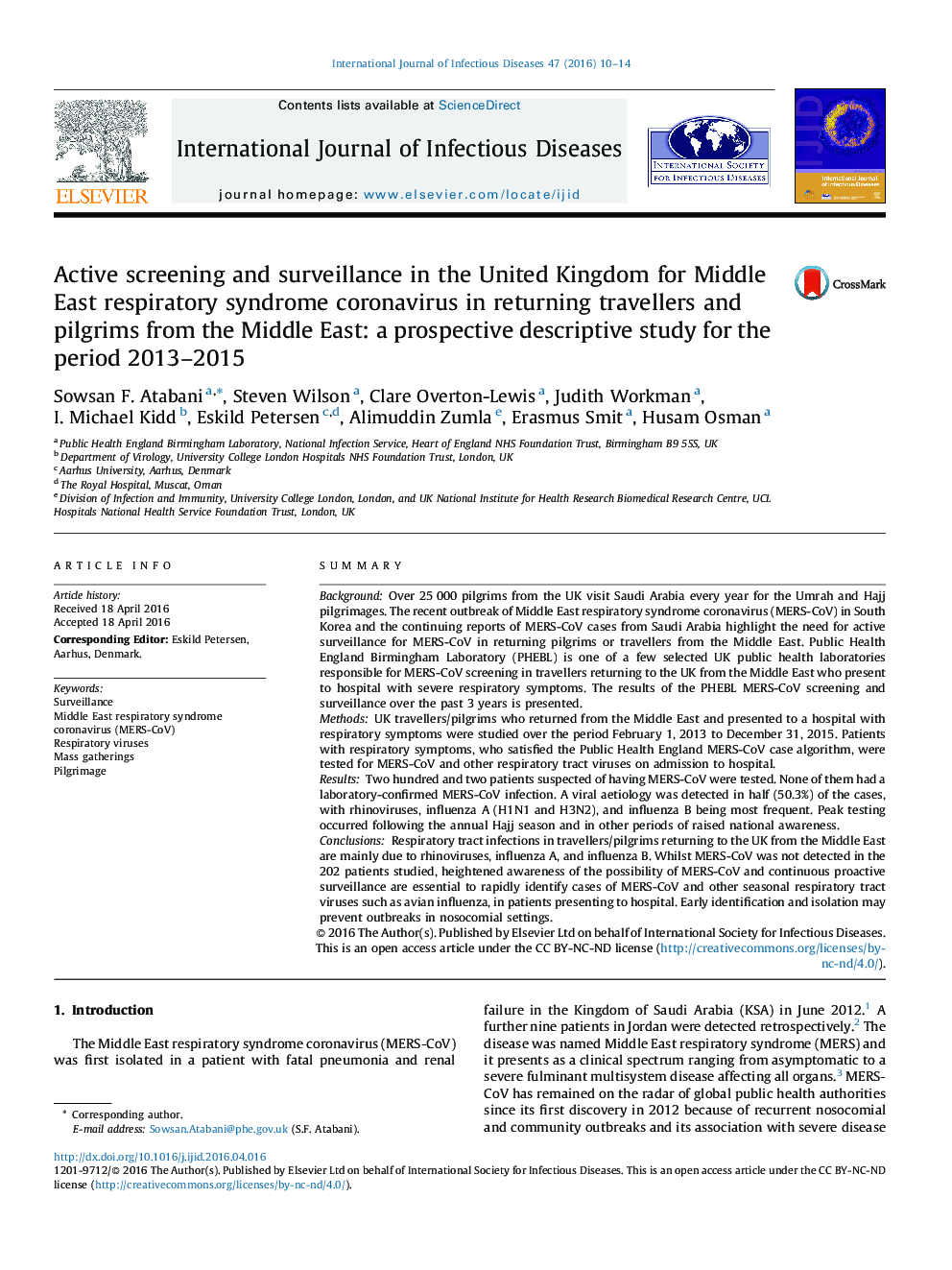| Article ID | Journal | Published Year | Pages | File Type |
|---|---|---|---|---|
| 3361776 | International Journal of Infectious Diseases | 2016 | 5 Pages |
•The Middle East respiratory syndrome coronavirus (MERS-CoV) remains a threat to global health security, and continuous surveillance for the virus in returning pilgrims or travellers from the Middle East is required.•The UK is home to over two million Muslims. Around 25 000 UK pilgrims visit Mecca and Medina each year for the Hajj and Umrah pilgrimages.•During the years 2013–2015, 214 UK patients who had travelled to the Middle East fulfilled the criteria of the MERS-CoV case definition algorithm and were tested for MERS-CoV infection.•No MERS-CoV cases were detected over the period of Hajj seasons 2013, 2014, and 2015.•A viral aetiology was detected in 50% of cases. Rhinovirus and influenza A, detected in equal proportions, were the most common viruses detected.•Heightened awareness and rapid screening are essential parts of sustained surveillance to prevent outbreaks of MERS-CoV.
SummaryBackgroundOver 25 000 pilgrims from the UK visit Saudi Arabia every year for the Umrah and Hajj pilgrimages. The recent outbreak of Middle East respiratory syndrome coronavirus (MERS-CoV) in South Korea and the continuing reports of MERS-CoV cases from Saudi Arabia highlight the need for active surveillance for MERS-CoV in returning pilgrims or travellers from the Middle East. Public Health England Birmingham Laboratory (PHEBL) is one of a few selected UK public health laboratories responsible for MERS-CoV screening in travellers returning to the UK from the Middle East who present to hospital with severe respiratory symptoms. The results of the PHEBL MERS-CoV screening and surveillance over the past 3 years is presented.MethodsUK travellers/pilgrims who returned from the Middle East and presented to a hospital with respiratory symptoms were studied over the period February 1, 2013 to December 31, 2015. Patients with respiratory symptoms, who satisfied the Public Health England MERS-CoV case algorithm, were tested for MERS-CoV and other respiratory tract viruses on admission to hospital.ResultsTwo hundred and two patients suspected of having MERS-CoV were tested. None of them had a laboratory-confirmed MERS-CoV infection. A viral aetiology was detected in half (50.3%) of the cases, with rhinoviruses, influenza A (H1N1 and H3N2), and influenza B being most frequent. Peak testing occurred following the annual Hajj season and in other periods of raised national awareness.ConclusionsRespiratory tract infections in travellers/pilgrims returning to the UK from the Middle East are mainly due to rhinoviruses, influenza A, and influenza B. Whilst MERS-CoV was not detected in the 202 patients studied, heightened awareness of the possibility of MERS-CoV and continuous proactive surveillance are essential to rapidly identify cases of MERS-CoV and other seasonal respiratory tract viruses such as avian influenza, in patients presenting to hospital. Early identification and isolation may prevent outbreaks in nosocomial settings.
